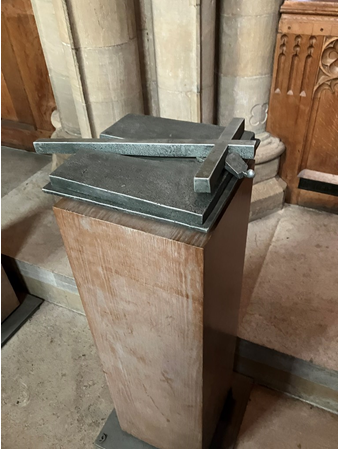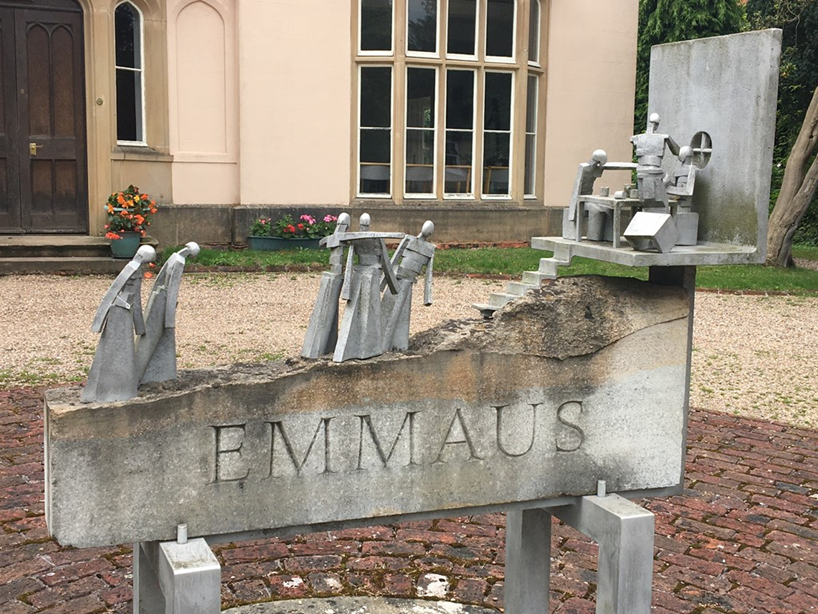A ROMAN Catholic priest described his experience of leading the Stations of the Cross. The local Baptist minister was present, and, moved by the service, asked whether the priest could come and lead them for his congregation at the Baptist church. “But you can’t call them ‘Stations of the Cross’,” he warned.
“Not a problem,” Fr John replied. “We’ll call them ‘Pictures of the Passion.’” So the Baptists had the Pictures of the Passion, were greatly taken by them, and asked the priest whether he could do them again the following year.
Call them what you will, it’s always an intense spiritual experience walking and praying the Stations of the Cross, the Pictures of the Passion, or the Way of the Cross.
Perhaps you have been to Jerusalem and walked the Via Dolorosa — the Way of Sorrows — and, in a tradition going back hundreds of years, have trodden in the winding footsteps of Jesus, from the place of his trial to the site of his crucifixion. More probably, because of the expense of travel, or fear of the political volatility of the Holy Land, you have walked the Stations of the Cross closer to home — in a church, or in the quietness of your heart.
Or, you have done none of these things, but you know very well, in your own lives, and in what you have to cope with, what it is to walk the Way of the Cross. Many mothers have found the pain of the Stabat Mater reflected in their own experience: “At the cross her station keeping Stood the mournful mother weeping.”
TRADITIONALLY, there are 14 Stations of the Cross, and there are four to which I find myself particularly drawn. The Fifth Station is Simon of Cyrene helping Jesus to carry his cross: a foreigner pressed into service. The Good News Bible contains line drawings by the Swiss artist Annie Vallotton, one of which — illustrating Galatians 6.2, “Bear one another’s burdens and so fulfil the law of Christ” — depicts all the family, young and old, having a share in carrying the load.
When I was at theological college, we had a parish mission to a town in the Midlands. I stayed in a terraced house that had seen better days, with an elderly and struggling lady, Edie. As far as Edie was concerned, she was no longer of any use to the church or anybody else: her time was over. Around the corner lived a young single mother with several children. Shunned by the neighbours, whenever the burdens of life were too heavy to carry, she would go to see her old Sunday-school teacher, who had known her since she was a little girl: Edie.
Looking at the Fifth Station reminds us of all those who are called to help to carry the cross as Christ incognito.
THE Sixth Station is St Veronica wiping the face of Jesus. Canon Frank Wright was a well-known priest in the diocese of Manchester. After he retired, I used to meet him when he was doing some work at Granada TV. During the war, Canon Wright had been in the RAF, and his plane had been shot down off the coast of Greece. Rescued from the sea by German soldiers, he was marched through the streets of a town near by. A young woman, standing on the pavement, ran out and handed him either a cigarette or sweets (recollections varied). This always meant a great deal to him, and a sign that he was not on his own.
In the 1980s, on the Sunday-morning TV programme Air Time, Canon Wright recalled that story, and a few days later received a letter from the woman who had offered that act of kindness. She was visiting her daughter in London, and had watched the programme in which he told their story. What a reunion they had! And what a daring act of kindness on the part of that young woman in that occupied town! She could have been shot.
Legend has it that a woman ran out of the crowd to wipe Jesus’s face as he carried his cross. What must it have been like to be a bystander on that day? That act of compassion, risky and vulnerable, could have cost Veronica her life.
In the Metropolitan Cathedral of Christ the King, Liverpool, there are gleaming bronze Stations of the Cross by Sean Rice, commissioned by Archbishop Derek Worlock shortly before he died. The Station depicting Jesus and Veronica shows Jesus, eyes sunken, exhausted, but looking at Veronica with profound compassion as she tries to help him as best she can. Her loving presence made all the difference on the day that Jesus was being marched to his crucifixion.
Sister Barbara June of the Sisters of the Love of God, in Oxford, used to say: “Love is presence.” Looking at that Station is a reminder to reach out and stand alongside those who are suffering or alone.
AT SOUTHWELL MINSTER, there are remarkable Stations of the Cross sculpted out of steel by Jonathan Clarke. The Ninth Station is that of Jesus falling for the third time. It looks as if Jesus is being crushed under the weight of the cross: driven into the ground.
 Author photoNinth Station: Jesus falls for the third time (Jonathan Clarke; Southwell Minster)
Author photoNinth Station: Jesus falls for the third time (Jonathan Clarke; Southwell Minster)
One of the giants of the Church of England in the 20th century was Owen Chadwick, late Master of Selwyn College, Cambridge. During the war, he was a curate at Huddersfield Parish Church. At the end of October 1941, there was a devastating factory fire in Huddersfield, in which more than 50 people lost their lives. Describing it as a long day, Chadwick wrote: “I spent all of it seeing burned skin and the relatives of corpses, the most miserable and most exhausting day of my life. When at last I got home after 11 p.m., dog-tired and empty and wretched, I opened a Bible and found, reluctantly, the lesson for the day.
“And the words [from the Book of Wisdom] leapt out from the page as though they were illuminated, and swept over my being like a metamorphosis, with relief and refreshment: ‘The souls of the righteous are in the hand of God and no torment shall touch them. . . Like gold in the fire he put them to the test — and found them acceptable, like burnt-offering upon the altar.’”
Looking at the Ninth Station reminds us to pray, whether for an individual, a group of people, or a situation; for all those being driven into the ground, drained, with seemingly the weight of the world on their shoulders, feeling that God is very far away.
INTERESTINGLY, the final Station of the Cross at Southwell — not in the cathedral, but outside (soon to be sited in the gardens of the Archbishop’s Palace there) — is not Jesus being laid in the tomb, but, rather, the disciples who first encountered the risen Christ on the road to Emmaus. I love that story.
Context in poetry is everything. Rowan Williams’s poem “Emmaus: Christ between” begins with the words:
First the sun, then the shadow,
so that I screw my eyes to see
my friend’s face, and its lines seem
different, and the voice shakes in the hot air.
This poem was first published in a collection of essays in honour of Frank Griswold, who had been the Presiding Bishop of the Episcopal Church in the United States. Rowan Williams wrote that walking in the company of Christ was what the Church was all about. He asks how, today, we relate to each other in the Church in such a way that we see Christ between us. How do we listen to the risen Lord Jesus?
 Final Station at Southwell Minster: The disciples encounter Christ on the road to Emmaus (Jonathan Clarke; Southwell)
Final Station at Southwell Minster: The disciples encounter Christ on the road to Emmaus (Jonathan Clarke; Southwell)
IN THE words of George Mackay Brown, the great Orcadian poet, in his poem Roads: “The road to the kirk Is a road of silences. . .”
It is the pregnant silence of listening and hearing. As in all things, we view the Stations of the Cross through resurrection-tinted spectacles. We remember that the risen Lord Jesus Christ is always beside us, and will come to us in the most surprising ways. We will see things in a new and unexpected light — not least as we recognise something of the risen Christ in others.
In oft-quoted words, Michel Quoist wrote: “The Way of the Cross winds through our towns and cities, our hospitals and factories, and through our battlefields; it takes the road of poverty and suffering in every form. It is in front of these new Stations of the Cross that we must stop and meditate and pray to the suffering Christ for strength to love him enough to act.”
We are not bystanders, but, rather, participants, as we go deeper into the mystery of our salvation and what it is to be human. The Stations of the Cross are a potentially life-transforming experience and encounter.
We adore you, O Christ, and we praise you.
Because by your holy cross you have redeemed the world.
The Ven. Peter Townley is a house-for-duty Assistant Curate in the Sherburn-in-Elmet Group in York diocese.

















